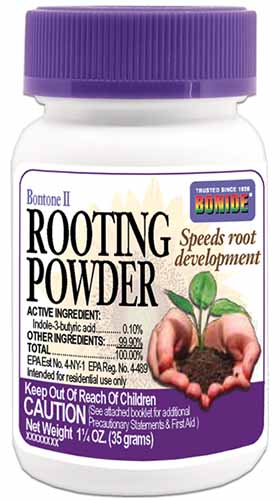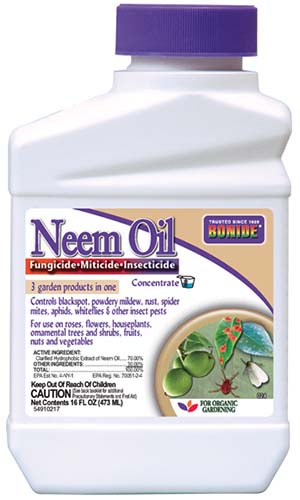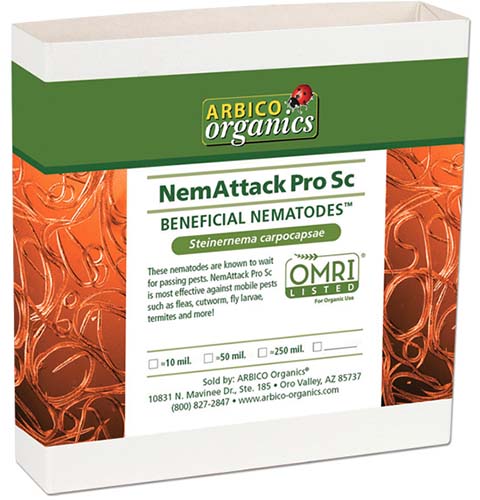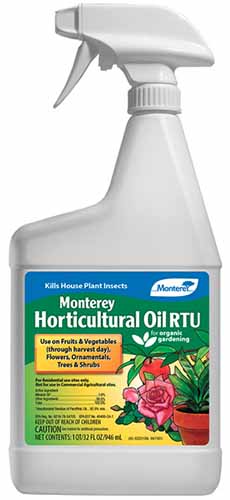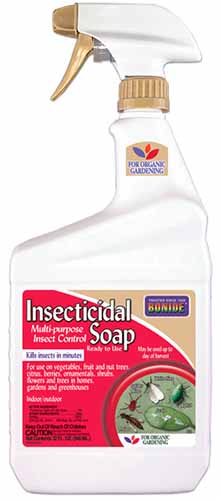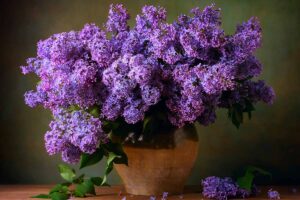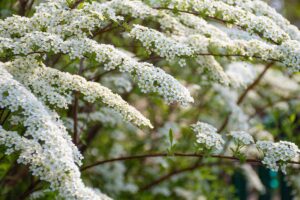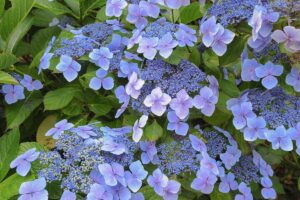Taxus cuspidata
Want a needle-leaved conifer with a little less needle?
You should consider the Japanese yew, a woody shrub with beautiful leaf “needles” that are more akin to small, narrow blades.
And if the “Blade” trilogy of vampire-slaying films has taught us anything, it’s that blades are pretty dang awesome.
The foliage straddles the line between the interesting, pointed leaves of a pine tree and the densely-packed broad leaves of a boxwood shrub, creating an appearance that’s striking yet humble.
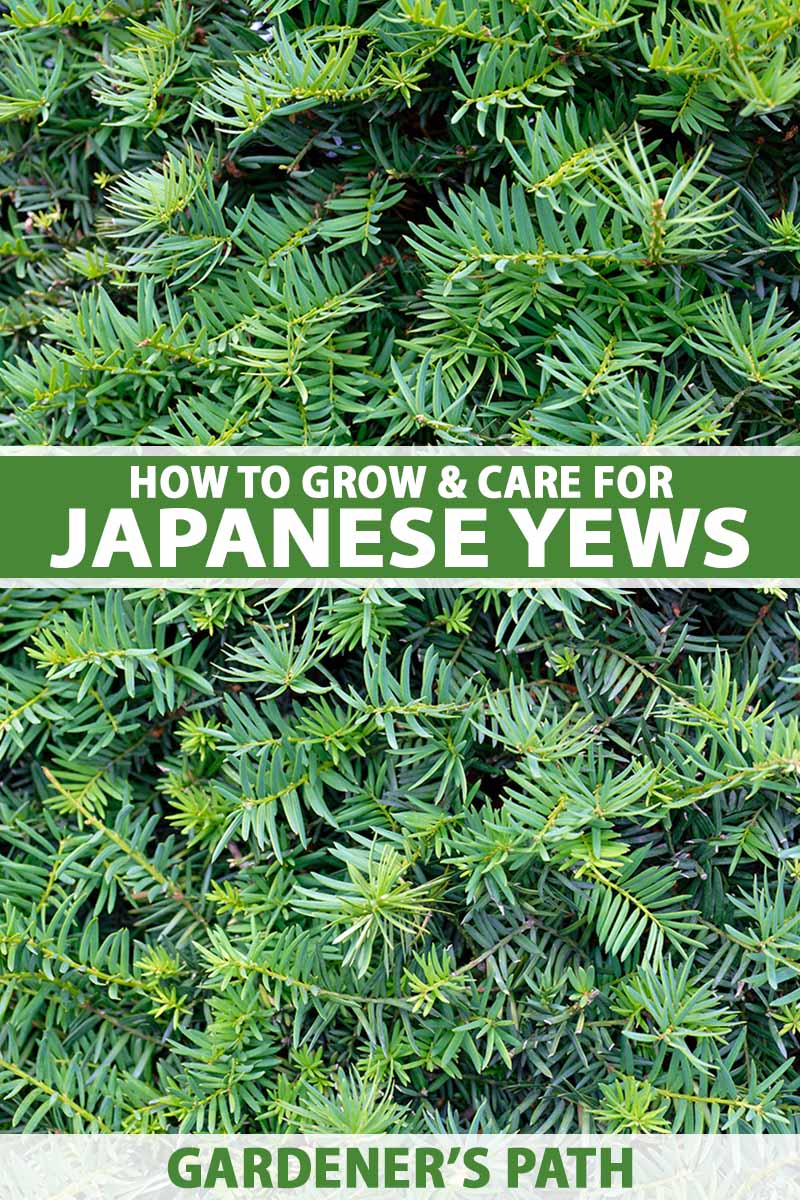
We link to vendors to help you find relevant products. If you buy from one of our links, we may earn a commission.
Peppering the female plants are attractive red fruits, which are eye candy for onlookers and actual candy for many forms of wildlife.
This particular Taxus species has some notable advantages over other types, such as a faster growth rate, increased cold hardiness, and tolerance for pruning.
Even if you’re already a yew connoisseur, it’s well worth adding this particular species and its cultivars to your landscape.
To help you grow and care for the Japanese yew, we’ve assembled a thorough guide to its cultivation.
Every essential aspect is covered, from propagation to long-term maintenance. “Yew” will be well-prepared, that’s for sure.
Here’s what I’ll cover:
What You’ll Learn
What Are Japanese Yews?
A member of the Taxaceae family, T. cuspidata belongs to the Taxus genus alongside a bunch of other yew species – the exact number of “a bunch” varies among botanists, from as few as seven to as many as 24.
Native to China, Japan, North Korea, South Korea, and Russia, the Japanese yew is hardy in USDA Zones 4 to 7, which extends significantly further north than the hardiness ranges of many yews.
T. cuspidata also has a leg up on other yews when it comes to pruning tolerance, vigor, and air pollution tolerance, making it among the toughest of the Taxus species.
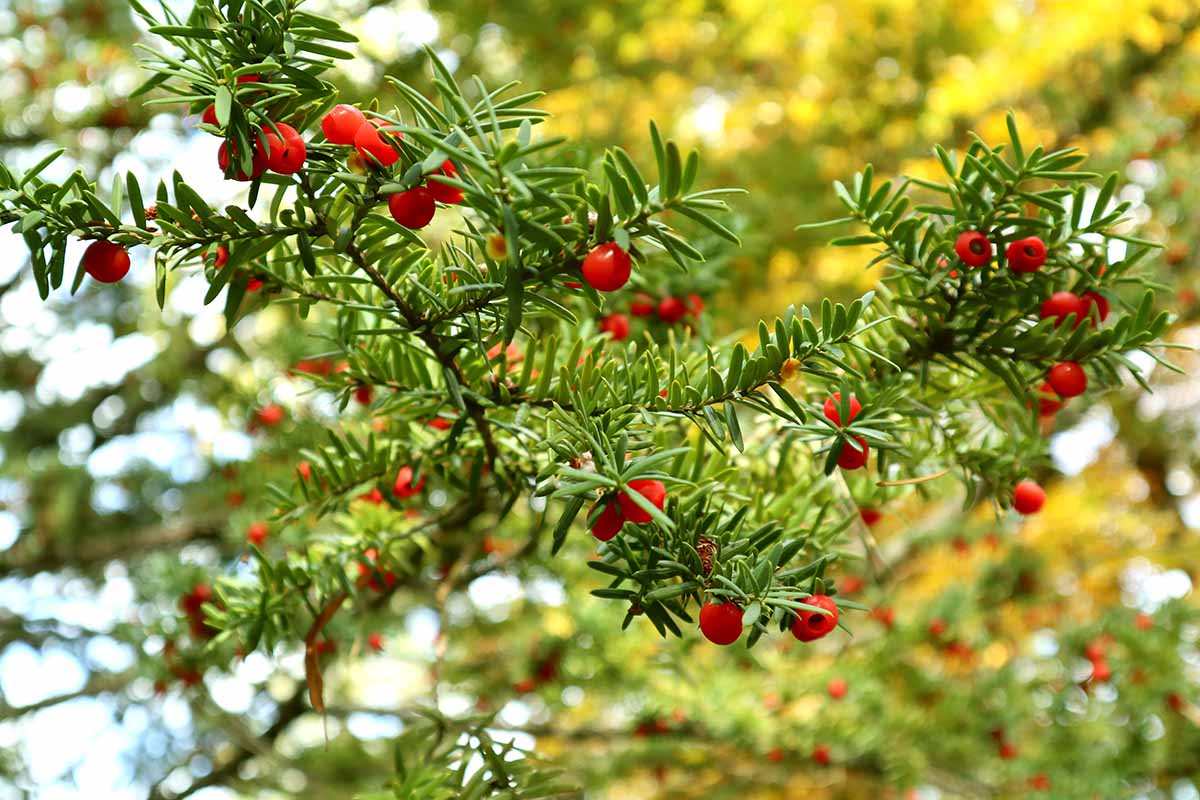
In its native lowland and mountainous forests, these plants can reach heights of up to 50 feet, but tend to top out at 30 when grown in the landscape and pruned regularly.
Relative to height, the width can be smaller, larger, or pretty much proportional, depending on the variety, planting location, and degree of pruning.
The aforementioned dark green leaves grow up to an inch long, are arranged spirally around the stems, and often have twin yellow bands on their undersides.
As an evergreen, this shrub doesn’t develop beautiful fall color or lose all of its foliage each year like deciduous plants, but it does cyclically replace its old leaves with new ones once they turn three years old. In harsh winters, the foliage may take on a rusty, reddish-brown hue.
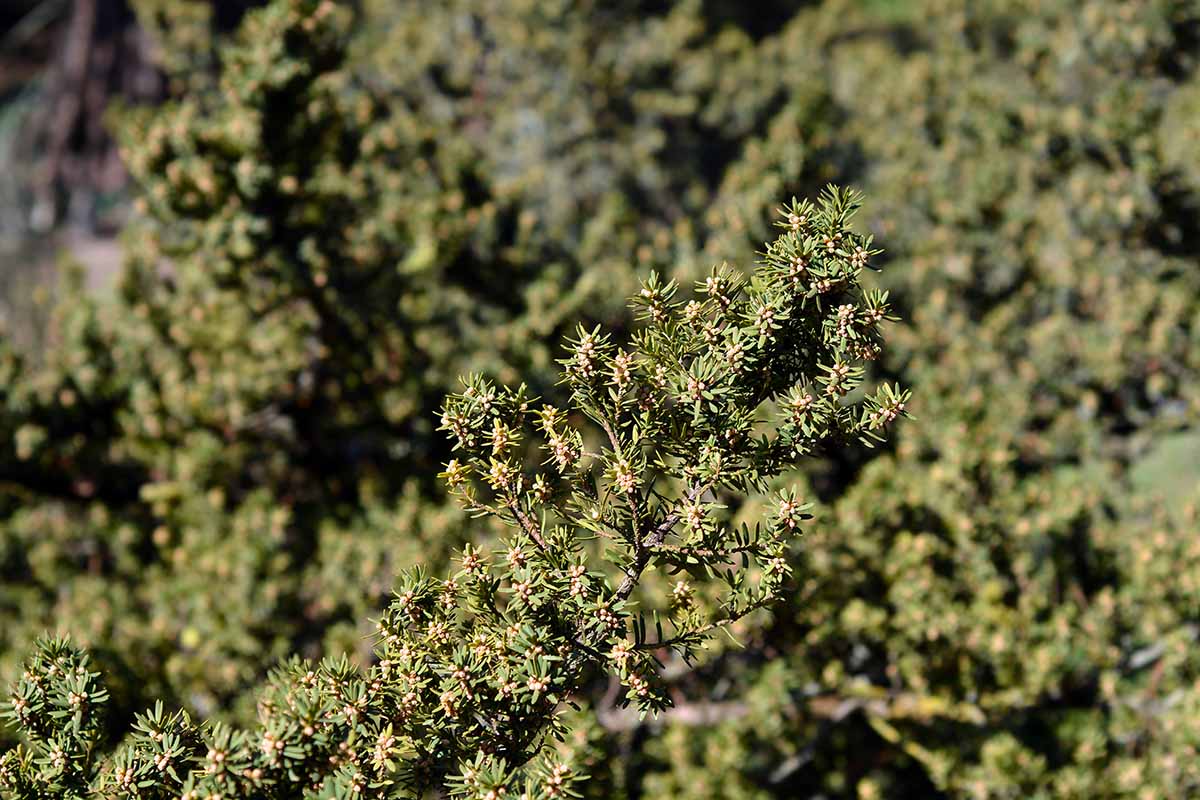
Japanese yews are dioecious, which means that there are separate male and female plants. From the female flowers grow small seed cones, each surrounded by a red, berry-like pulp that many woodland critters love to consume.
Except for the aforementioned pulp, like all yews the rest of the plant contains taxanes, which are extremely poisonous alkaloids that can kill humans, pets, and cattle in very small quantities. These taxanes don’t affect birds or deer, who can munch on them with impunity.
Assuming that nothing kills them, T. cuspidata can live for a very long time – some Russian specimens are reputed to be over a thousand years old!
Japanese Yew Propagation
Germinating a Japanese yew seed can take several years, which doesn’t include the time it takes for the seedling to reach a transplantable size.
If you’d like to have a T. cuspidata relatively quickly, then I’d recommend propagation via cuttings or purchasing a nursery start to transplant instead.
From Cuttings
In late summer to early fall, take four- to six-inch cuttings from the ends of healthy-looking shoots using a sharp and sterile blade.
Defoliate the lower half of each cutting, then apply some rooting hormone to the leafless section.
Need a rooting hormone? Try Bonide’s IBA powder, available from Arbico Organics.
Bonide Bontone II Rooting Powder
Fill a four-inch container with sand for each cutting that you took, then stick the cuttings two inches deep into the sand, cut ends down.
Wet the sand with water, set the containers on individual saucers or a tray to collect the liquid that drains out, then place the containers somewhere they can receive a lot of indirect sunlight, such as by a south-facing window.
Keep the sand moist as the cuttings develop roots. You can check for rooting by giving the cuttings a gentle tug – if you feel some resistance, then you’ll know that the root system is solid.
Repot as needed to provide the cuttings with an inch or two of elbow room on all sides.
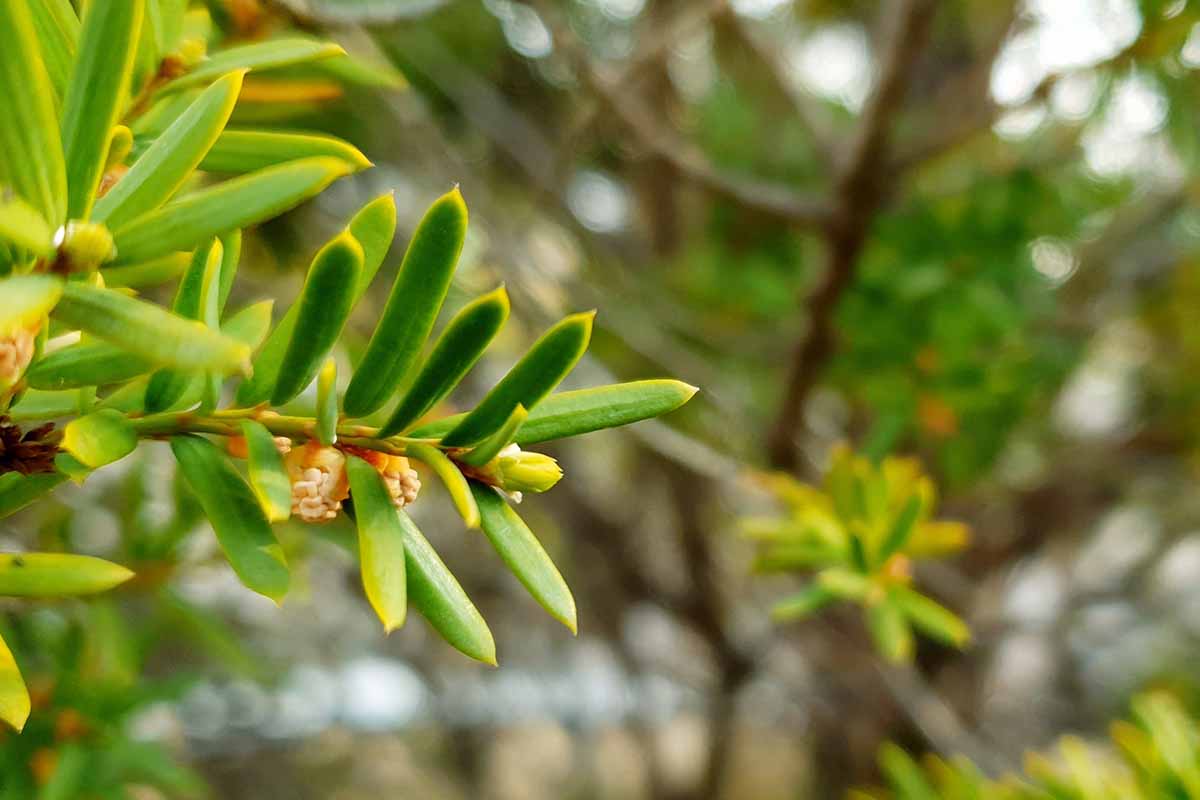
If the root systems are amply strong and there’s additional aboveground growth by spring, they’ll be ready to harden off to the outdoors in preparation for transplanting.
To harden off, leave the cuttings outdoors for a half to full hour before bringing them back inside.
Add an additional 30 to 60 minutes of exposure to each following day until the cuttings are able to be outside for a full day.
At this point, they’re ready to put in the ground!
Via Transplanting
Whether you have rooted T. cuspidata cuttings or purchased transplants from a nursery, it’s pretty simple to transplant them.
Once your area’s final frost date has passed, find a spot in your garden with sandy to loamy soil. Ensure that the soil is well-draining, has a pH of 6.0 to 6.5, and that the location receives full sun to partial shade exposure. Some shielding from wind would be wise, too.
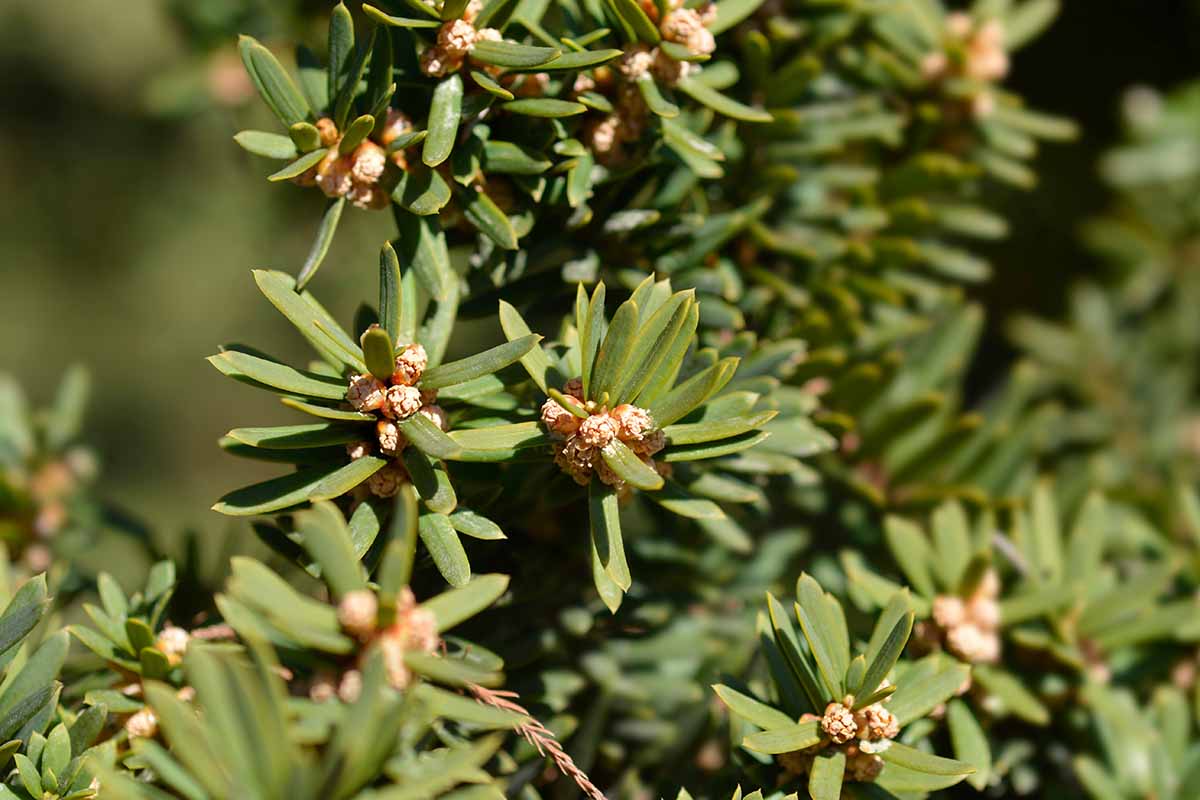
If you’re planting multiple specimens, be sure to space them apart adequately. If you want to grow a hedge, provide 12 to 18 inches of elbow room for each plant.
Otherwise, give each planting enough room to reach their mature spread without bumping into each other – anywhere from three to 30 feet, depending on the variety.
Dig holes that are just as deep and a bit wider than the transplants’ root systems. If you’d like, mixing a couple inches of organic matter into the dug-out soil before backfilling can provide your transplants with a nice fertility boost.
After removing them from their containers, gently lower the transplants in, level their crowns with the soil surface, then backfill and water in.
How to Grow Japanese Yews
Now that you’ve situated your Japanese yews in their new homes, let’s discuss how to keep them happy throughout their stay.
Climate and Exposure Needs
T. cuspidata needs to grow in USDA Hardiness Zones 4 to 7 to survive year-round. But as long as this condition is met, you’ve got a lot of flexibility otherwise.
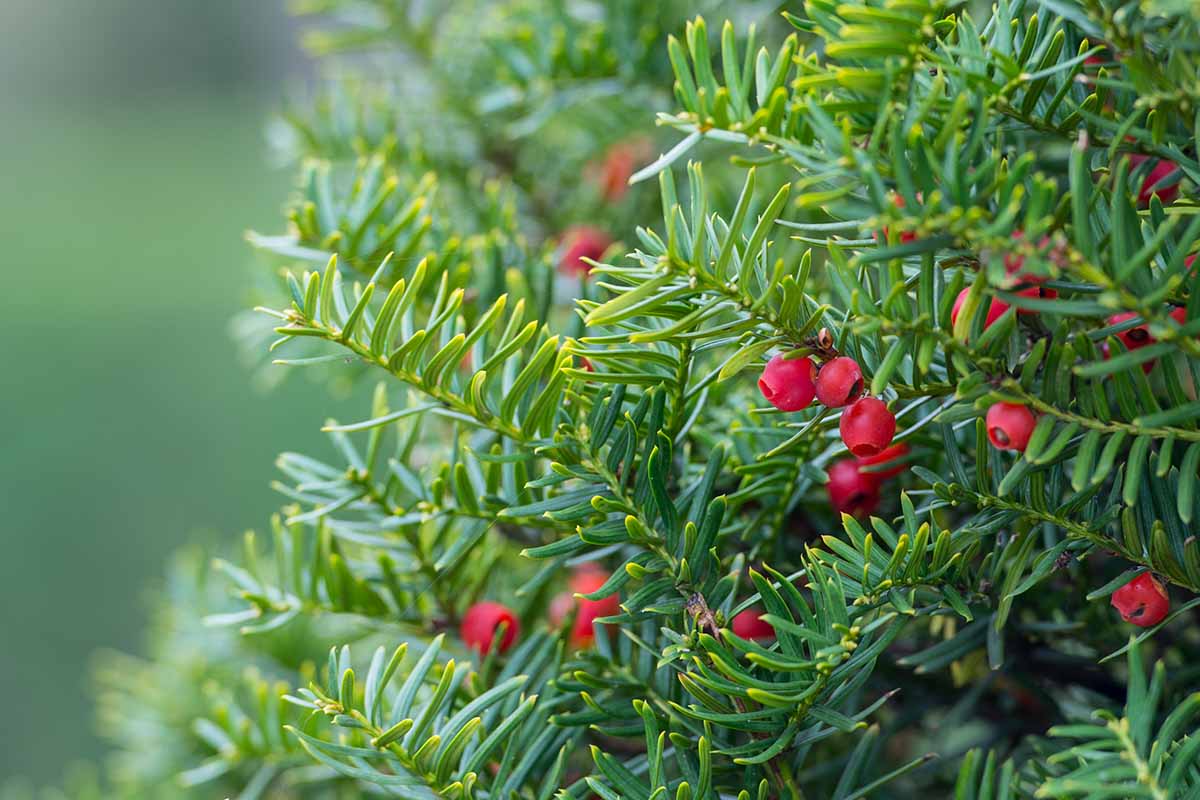
Atmospheric pollution, moderate bouts of wind, extreme shade… it’s all tolerable for a Japanese yew. But for optimal health, full sun to partial shade exposure is best, along with protection from wind.
Can’t decide which to go with or simply want more direction? The more northern you are, the more sunlight you should provide. Vice versa the further south you go.
Soil Needs
Ample drainage, a pH of 6.0 to 6.5, and an average amount of organic matter make for a happy Japanese yew.
If your soil is a bit low on fertility, amending the root zone with a couple inches of organic matter every spring can provide a boost of nutrients.
Water Needs
Drenched and waterlogged soil can spell disaster for T. cuspidata roots. Along with providing ample drainage, you can prevent soggy soils by irrigating properly.

To pull this off, allow the top three to four inches of soil to dry before irrigating.
Using my own average-length digits for reference, if you can stick your entire finger into the soil without feeling moisture, then you’ve got the green light to water.
Growing Tips
- Full sun to partial shade exposure is ideal.
- Ample drainage is essential.
- Allow the top three inches of soil to dry before watering.
Pruning and Maintenance
In terms of pruning possibility, a yew such as T. cuspidata is second only to a boxwood.
Whether you’re trying for a bonsai, an elaborate topiary, or simply a nice rectangle, early spring is the perfect time for shaping your Japanese yew.
Regardless of what you’re going for, try and keep your removed trimmings to less than one third of the aboveground greenery.

Damaged, dead, or diseased branches can be removed whenever you happen to notice them.
Mulching the root zone with an inch or two of wood chips or pine straw will help to protect the roots and suppress weed growth. But make sure to keep it a couple inches from the crown to prevent rot!
In winter, your Japanese yews will need less water than they would during the growing season. Water as much as necessary to prevent desiccation, and cease watering entirely while the ground is frozen.
To learn more about winter damage in yews, take a gander at this guide.
Japanese Yew Cultivars to Select
A standard Japanese yew is beautiful, no doubt… but sometimes, you just want something a bit different.
If it’s variety that you seek, then these three cultivars are sure to provide it. Remember: these plants are dioecious, so if you want fruits, then you’ll have to plant both a male and a female.
Capitata
‘Capitata’ is a tree-like form of the shrub we all know and love. Capable of reaching 40 to 50 feet in height, this cultivar takes on a pyramidal habit naturally, although pruning allows for different shapes.
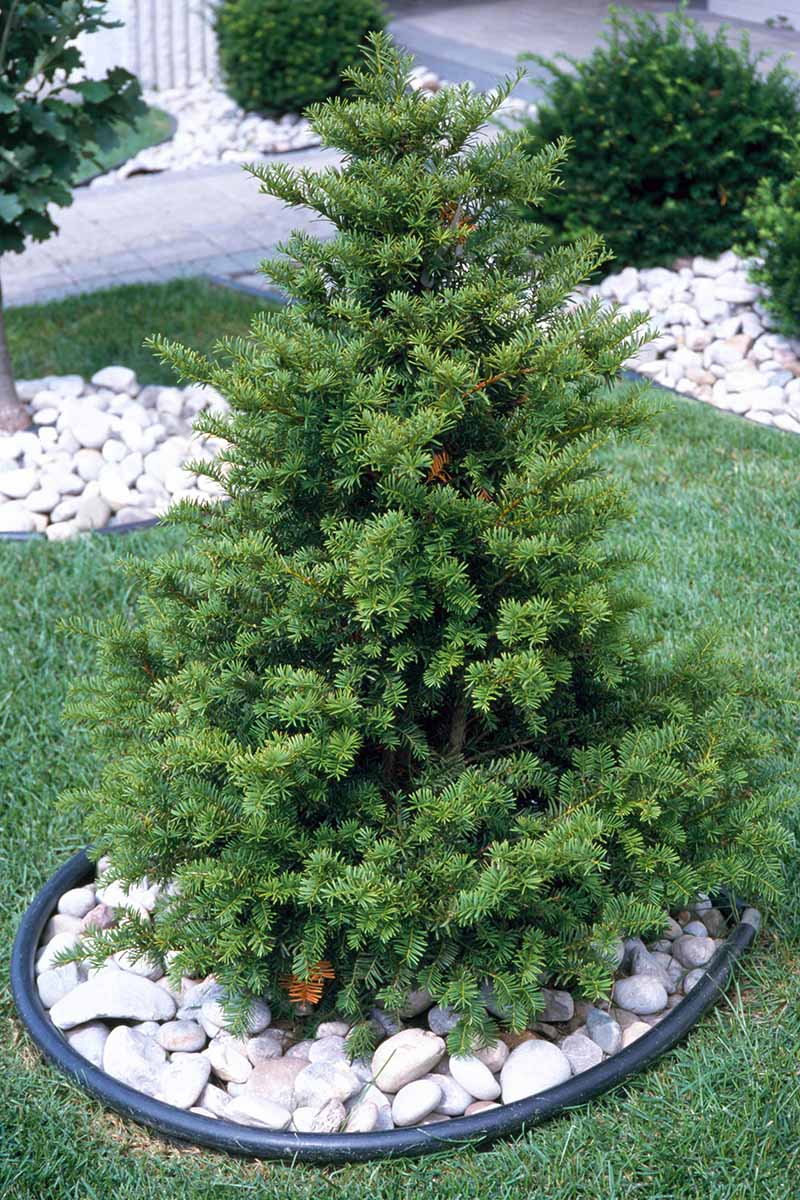
In addition, female ‘Capitata’ specimens are capable of producing a vast amount of fruit, which are capable of attracting even more animals and gazes than usual.
Densa
On the opposite side of the size spectrum, we’ve got ‘Densa,’ a dwarf variety with a spreading growth habit.
‘Densa’ slowly reaches a height of four feet and a spread of eight feet, making it the perfect selection for placing next to a walkway or a structure’s foundation.
Nana Aurescens
Another small and slow-growing variety, ‘Nana Aurescens’ grows two feet tall, spreads three to four feet wide, and shakes things up with a beautiful golden yellow color.

This color manifests itself in the first-year growth of leaves before they mature to a gorgeous dark green in subsequent years.
When it’s all taken in, it kinda looks like frosted tips, which look a lot better on plants than they do on people.
Managing Pests and Disease
Many health issues in Japanese yews can be prevented by properly caring for your shrubs from the get-go.
However, certain threats need a more specific approach.
Deer
The cute hoofed herbivores of garden-munching and “Bambi” fame, deer are one of the few animals with a tolerance for yew taxanes, which can make short work of many other critters.
As winter starts and the pickings get slim, hungry deer will often turn their attention to yews, which can leave them severely defoliated and looking worse for wear.
Applications of deer repellent on susceptible plants can repel these cervids, while a properly-constructed deer fence placed around your landscape will keep them out entirely.
Enviro Pro offers six-pound tubs of granular deer repellent on Amazon.
For some guidance on deer fence construction, we’ve got you covered.
Insects
Since insects are inclined to vector pathogens, you should definitely dial in your pest management practices, lest you have a disease on your hands as well as bugs.
Black Vine Weevil
A threat to Japanese yews in both its larval and adult form, the black vine weevil (Otiorhynchus sulcatus) is not to be taken lightly.
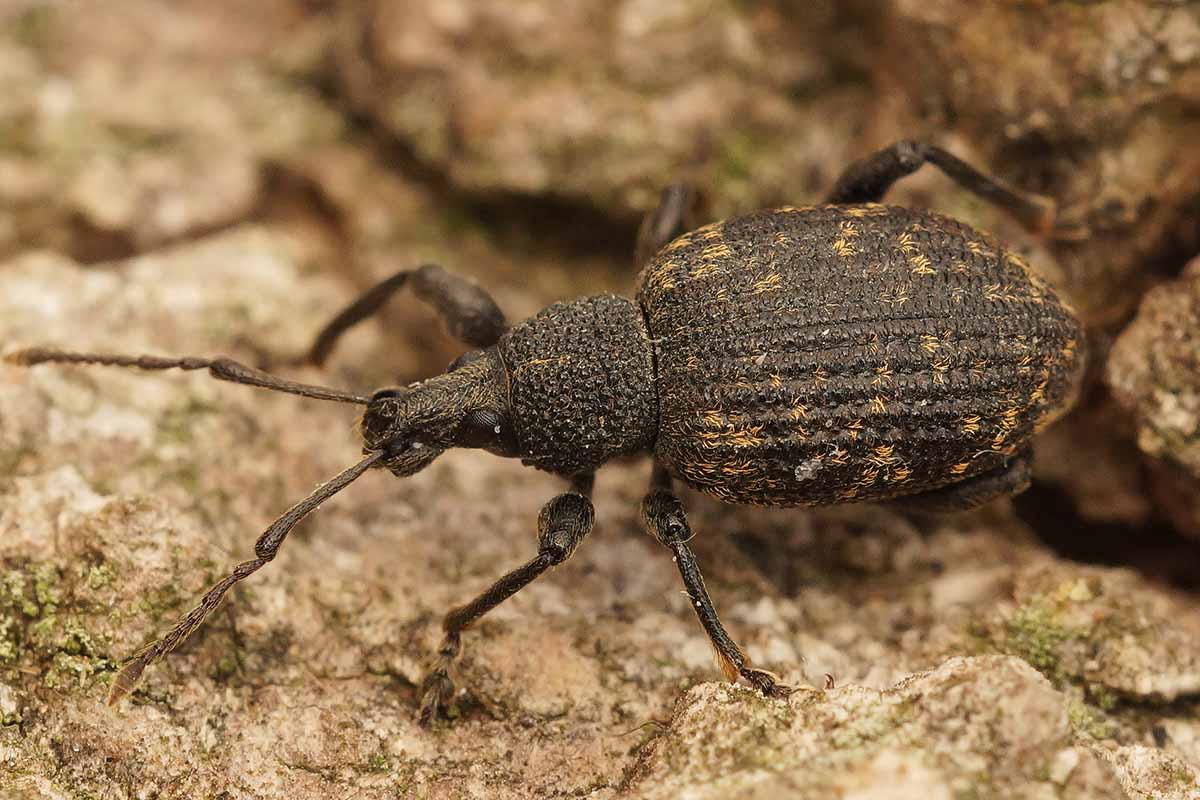
The larvae are C-shaped white grubs, while the hard-shelled adults are shiny and black.
The former takes half-oval bites out of leaves, while the latter primarily eats the roots and lower stems. If the damage is severe enough, the plant can lose vigor and health before eventually perishing.
Neem oil sprays are enough to kill adults, while beneficial nematodes like Steinernema carpocapsae will take care of the grubs.
Bonide offers neem oil in bottles of concentrate and ready-to-use sprays at Arbico Organics.
NemAttack Beneficial Nematodes
The S. carpocapsae nematodes are also available at Arbico Organics.
Mealybugs
Congregating in white, cottony masses, mealybugs such as Phenacoccus citri, P. gossypii, and P. longispinus use their piercing-sucking mouthparts to extract vital sap from the leaves and branches of a Japanese yew, which can leave infested sections with chlorosis and necrosis.
If the infestation is large enough, then these symptoms can wreak havoc on the entire specimen.
Sprays of horticultural oil or insecticidal soap should be more than enough for controlling mealybugs without resorting to chemical pesticides.
Monterey sells ready-to-use and concentrated forms of horticultural oil at Arbico Organics.
Bonide has a ready-to-spray insecticidal soap available at Arbico Organics as well.
Learn more about dealing with mealybugs in our guide.
Taxus Scale
Also known as Pulvinaria floccifera, the taxus scale is a flattened, yellow to brown species of soft scale that feeds from Japanese yew leaves in similar manner to mealybugs, and causes similar symptoms of decline.
As it feeds, the Taxus scale excretes honeydew, which attracts ants and leads to the formation of black sooty mold.
Your best bet is to utilize horticultural oil against these pests during their crawler stage in early summer.
Disease
Sanitary gardening practices go a long way in preventing disease.
Such practices include using sanitized gardening tools, planting in disease-free soils, and raking up nearby plant detritus that may harbor pathogens.
Phytophthora Rot
Caused by oomycetes in the Phytophthora genus, Phytophthora rot leads to foliar chlorosis, needle drop, shoot dieback, root discoloration, and stunted growth in a Japanese yew.
In the case of severe infections, the combined stress of all these different issues can eventually lead to the shrub’s death.

Since the causal pathogen loves wet conditions, not oversaturating the soil is a powerful form of prevention.
If the plant becomes infected, pruning out diseased tissues can limit the spread to other specimens, while sprays or soil drenches of fungicides can help prevent infection.
Root Rot
Root rot also tends to begin with excess moisture, but it’s entirely an abiotic condition.
While many rots are caused by actual pathogens such as fungi, bacteria, and oomycetes, “root rot” refers to the root suffocation that occurs when plant roots sit in oversaturated soils that don’t allow for air to reach the roots.
When the roots aren’t able to breathe, they start to die and become necrotic, which leads to overall deterioration above the soil line, as well. And if this occurs for long enough at a high enough severity, then the entire plant may perish.

Keeping your soil from becoming oversaturated is the most important part of preventing root rot. If your tree has become afflicted, cease watering immediately to allow the soil to dry out more.
If you’re able to lift an afflicted plant out of the ground, you can try to remove any rotted roots. But if more than half of the root system is rotted-out, then the plant may be beyond saving.
Best Uses for Japanese Yews
In your arsenal of possible plantings, the Japanese yew is essentially a multitool, a jack of all trades. It can play many roles in the landscape.
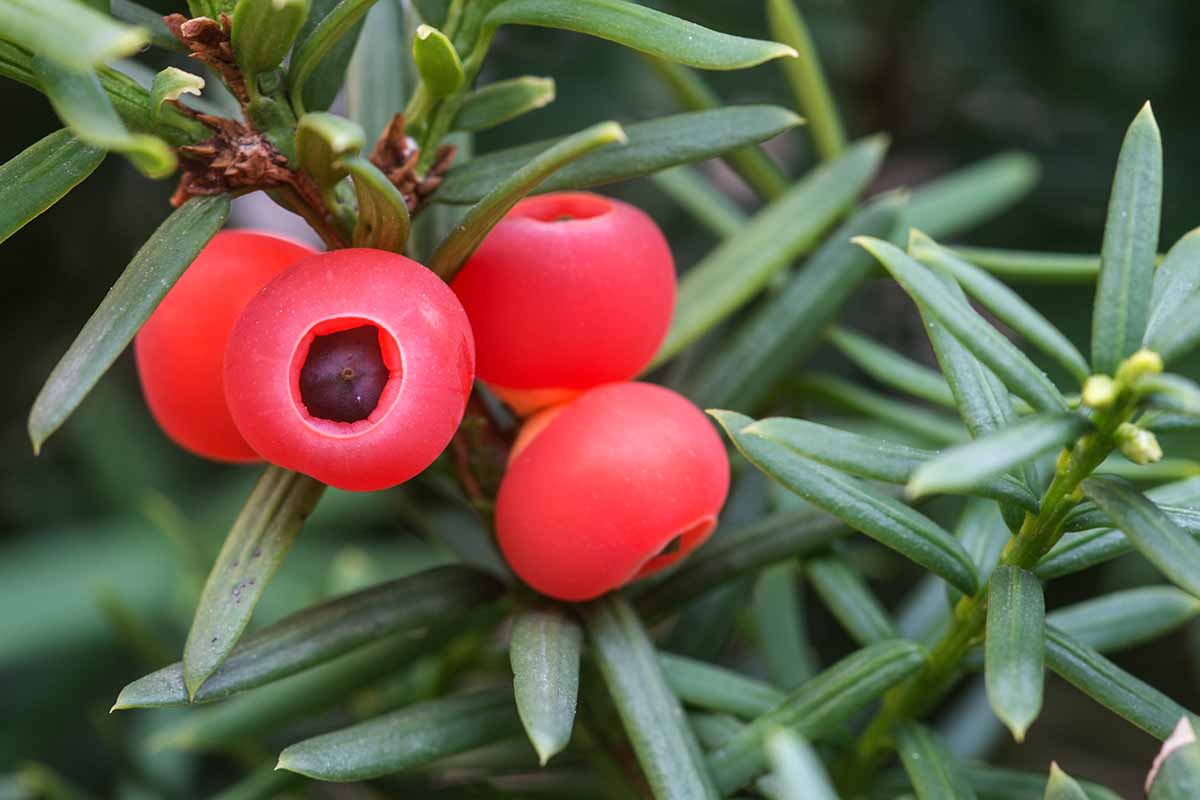
A mass of T. cuspidata is a great way to line the foundation of your house or screen your property from prying eyes.
It can be sheared into a unique shape, kept pleasantly geometric, or even grown as bonsai. Options abound!
Quick Reference Growing Guide
| Plant Type: | Evergreen woody shrub | Foliage Color: | Green (red fruit) |
| Native to: | China, Japan, North and South Korea, Russia | Water Needs: | Moderate |
| Hardiness (USDA Zone): | 4-7 | Maintenance: | Moderate |
| Bloom Time / Season: | Spring | Tolerance: | Air pollution, drought, heavy shade, moderate wind, rabbits |
| Exposure: | Full sun to part shade | Soil Type: | Sandy loam, average fertility |
| Time to Maturity: | 10-20 years | Soil pH: | 6.0-6.5 |
| Spacing: | 12-18 inches (hedging), width of mature spread (specimens) | Soil Drainage: | Well-draining |
| Planting Depth: | Depth of root system (transplants) | Attracts: | Birds, deer |
| Height: | 3-30 feet | Uses: | Bonsai, hedges, foundation plantings, groupings, masses, screens, topiaries |
| Spread: | 3-30 feet or more | Family: | Taxaceae |
| Growth Rate: | Fast (juvenile), slow (mature) | Genus: | Taxus |
| Common Pests and Diseases: | Black vine weevils, mealybugs, Taxus scale; Phytophthora rot, root rot | Species: | Cuspidata |
You’re Overdue for a Japanese Yew
If your landscape is short a Japanese yew or two, then you might want to get on that ASAP. You’ll thank me later.
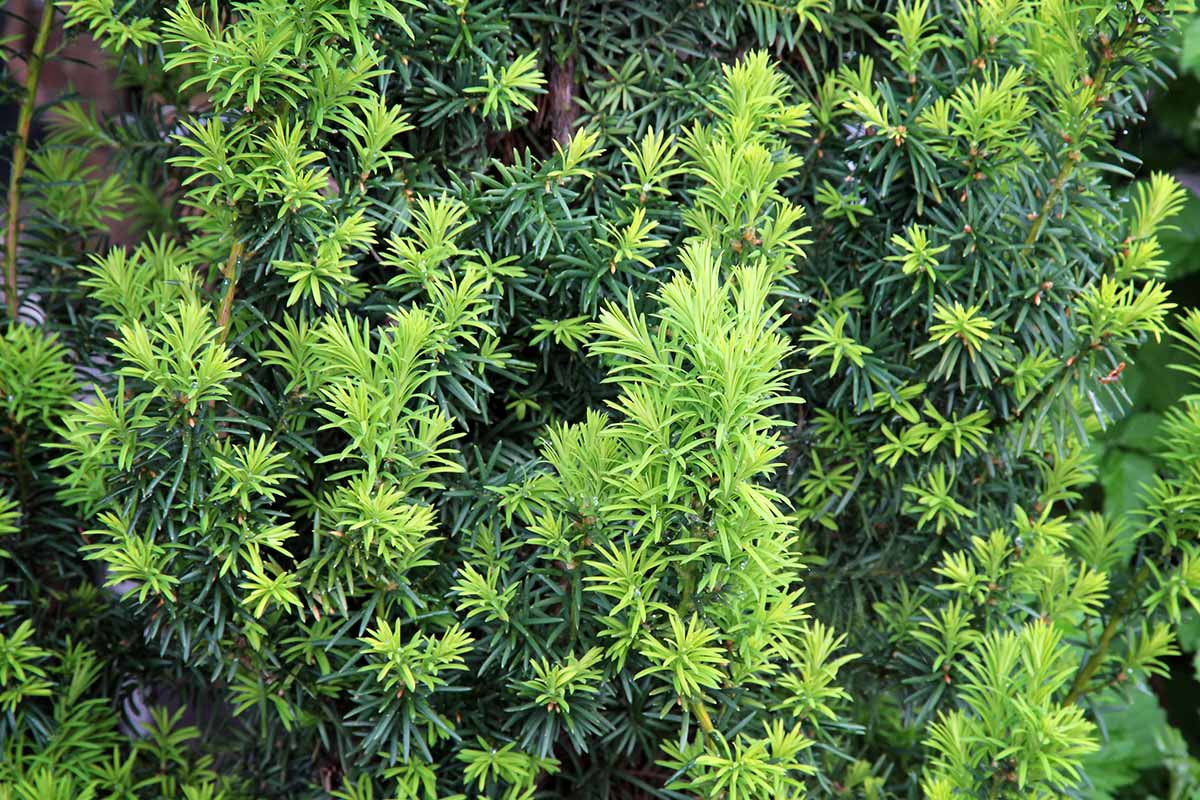
Regardless of how you use this shrub, it’s sure to stand out. Cultivate it right, and it’ll do so for the long haul!
Curious about anything else Japanese yew-related? Have tips of your own to share? Head on down to the comments section below!
Can’t get enough of evergreen shrubs? Try these guides on for size:
